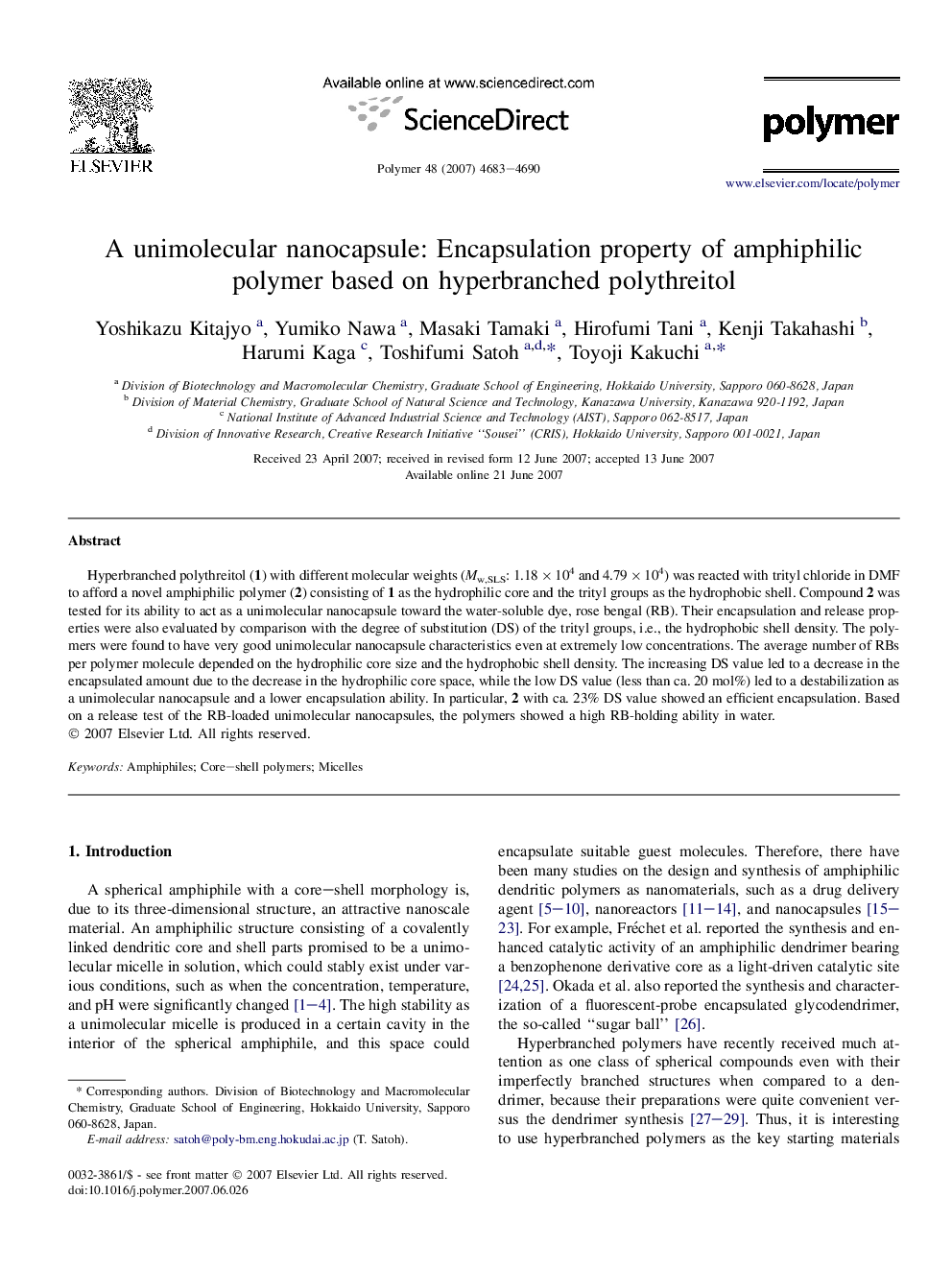| Article ID | Journal | Published Year | Pages | File Type |
|---|---|---|---|---|
| 5185762 | Polymer | 2007 | 8 Pages |
Abstract
Hyperbranched polythreitol (1) with different molecular weights (Mw,SLS: 1.18Â ÃÂ 104 and 4.79Â ÃÂ 104) was reacted with trityl chloride in DMF to afford a novel amphiphilic polymer (2) consisting of 1 as the hydrophilic core and the trityl groups as the hydrophobic shell. Compound 2 was tested for its ability to act as a unimolecular nanocapsule toward the water-soluble dye, rose bengal (RB). Their encapsulation and release properties were also evaluated by comparison with the degree of substitution (DS) of the trityl groups, i.e., the hydrophobic shell density. The polymers were found to have very good unimolecular nanocapsule characteristics even at extremely low concentrations. The average number of RBs per polymer molecule depended on the hydrophilic core size and the hydrophobic shell density. The increasing DS value led to a decrease in the encapsulated amount due to the decrease in the hydrophilic core space, while the low DS value (less than ca. 20Â mol%) led to a destabilization as a unimolecular nanocapsule and a lower encapsulation ability. In particular, 2 with ca. 23% DS value showed an efficient encapsulation. Based on a release test of the RB-loaded unimolecular nanocapsules, the polymers showed a high RB-holding ability in water.
Related Topics
Physical Sciences and Engineering
Chemistry
Organic Chemistry
Authors
Yoshikazu Kitajyo, Yumiko Nawa, Masaki Tamaki, Hirofumi Tani, Kenji Takahashi, Harumi Kaga, Toshifumi Satoh, Toyoji Kakuchi,
